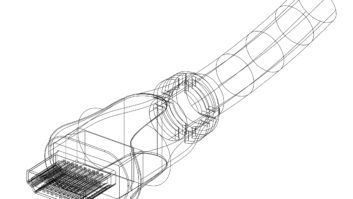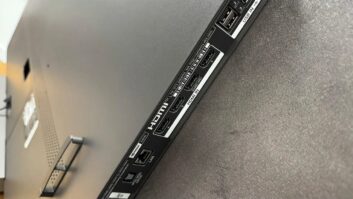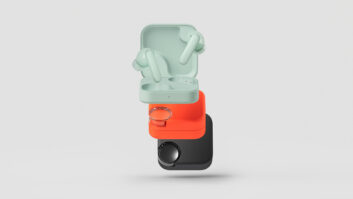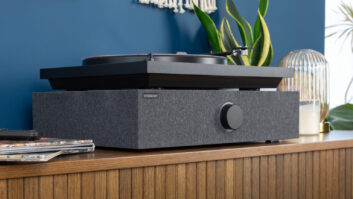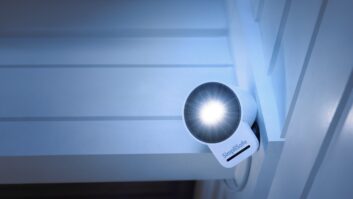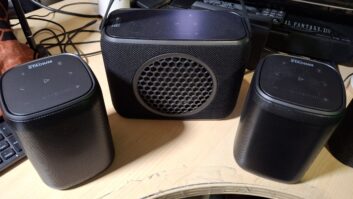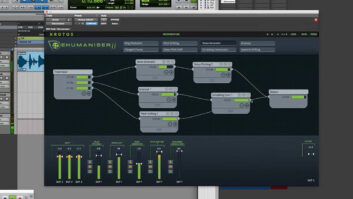LAS VEGAS -Major carriers went to CTIA’s Wireless 2001 with details of their plans to launch 2.5G and 3G high-speed-data service in 2001, and handset suppliers unveiled a variety of phones ready to deliver the benefits to consumers.
Also at the show:
- Bluetooth headsets appeared from Motorola, Ericsson, GN Netcom and Plantronics at suggested retails of $199 or less. Ericsson also unveiled a trio of GSM/GPRS phones with built-in Bluetooth and a TDMA trimode phone that accepts a snap-on Bluetooth module.
- Motorola’s GN Netcom-sourced headset, due early in the fourth quarter at less than a suggested $200, fits on one ear and lets users voice-dial the Timeport 270c, the company’s only handset with built-in Bluetooth. It also voice dials any other Bluetooth handset as long as it incorporates the GSM707 voice-dialing command set.
- San Francisco-based Telespree unveiled a pen-shaped keypad-less prepaid 1.9GHz GSM phone that can be marketed for over-the-counter sale by carriers or airtime resellers. (See story on page 31 for details.)
Carrier Plans: In next-generation service developments, four carriers outlined their migration plans: AT&T, Cingular, Sprint PCS and Verizon.
Verizon announced that it will begin an “aggressive” rollout of cdma2000 1X technology later this year, with the goal of offering the capacity-expanding 144 Kbps service commercially to subscribers by the end of the year. Service is already available in Las Vegas and San Diego, although service won’t be promoted until handsets are available, and Verizon said it’s already testing 1X handsets from “multiple vendors.”
Verizon’s installation of 2.4 Mbps 1X EV technology will begin sometime in 2002.
1X will double voice capacity, increase battery standby times by 50 percent, speed up data rates to allow for transmission of attachments, and allow for an always-on packet-data connection to the Internet. The always-on connection makes it possible to access the Internet without using up the rate plan’s circuit-switched voice minutes.
For its part, carrier Sprint PCS said it will upgrade its entire nationwide network to 1X between late this year and early 2002, at which time it is expected to begin promoting the service to consumers.
In the meantime, Sprint said, it will begin seeding the market with 1X handsets in the third and fourth quarters. In late 2002, Sprint will upgrade its 1X network to offer datarates up to 307 Kbps, then install 1X EV DO in 2003 to accelerate datarates to 2.4 MBps before adding 1X EV DV beginning in early 2004 to expand voice capacity once again and accelerate data rates to 3-5 MBps.
1X handsets will be priced at a slight premium, said a spokesman, in part because of such features as color displays and increased memory for storing downloaded information.
TDMA and GSM carrier Cingular announced its GSM markets in California, Nevada and Washington state will offer GPRS packet-data service in the second quarter and that its other GSM markets (the Carolinas, eastern Tennessee, and coastal Georgia) will offer it later in the year.
Cingular said it will begin installing EDGE packet-data technology in its TDMA markets by the end of the year through 2003. In the coming weeks, the carrier said it will decide whether to install GPRS in its TDMA network as an interim step before the EDGE rollout.
AT&T chief technology officer Rod Nelson reiterated plans for 1.9GHz GSM/GPRS deployment in the second half and begin to phase in service during that time. He declined to state whether the company would implement GSM in its 800MHz cellular spectrum that it is already using.
Handset plans: For GSM/GPRS networks and 1X networks, multiple suppliers showed compatible handsets, some of which are due later this year.
GSM/GPRS handsets were shown by Motorola, Mitsubishi, Samsung, Ericsson and Siemens, while 1X handsets were shown by Kyocera, LG InfoComm and Samsung. For its part, Audiovox announced 1X plans but didn’t show models (see story above).
Also at the show, despite the launch of new TDMA handsets by Audiovox, Nokia and Mitsubishi, many handset makers said they believe time is running out on TDMA.
A Cingular spokesperson said during a Nokia preshow event that Cingular plans at some point to gradually install GSM in its 800MHz TDMA cellular markets and activate new 800MHz subscribers on GSM phones. Handset makers said they expect AT&T to follow suit, even though to date it has publicly stated only that it will install GSM in unused 1.9GHz spectrum.
Suppliers said the pressure is on for carriers to abandon TDMA for GSM because GSM handsets and infrastructure benefit from lower pricing due to a greater number of competitors and to the economies of scale resulting from GSM’s number one market position.
One supplier also contended that infrastructure manufacturers have spent little R & D money on upgrading TDMA networks to W-CDMA, the 3G technology planned by AT&T.
Also at the show, most handset manufacturers were resisting carriers’ pleas for dual-mode TDMA/GSM handsets to tie together the GSM and TDMA networks they own. However, Siemens showed such a model. Panasonic and Samsung declined to make such models because their lifecycles will be short as carriers move to 3G.




